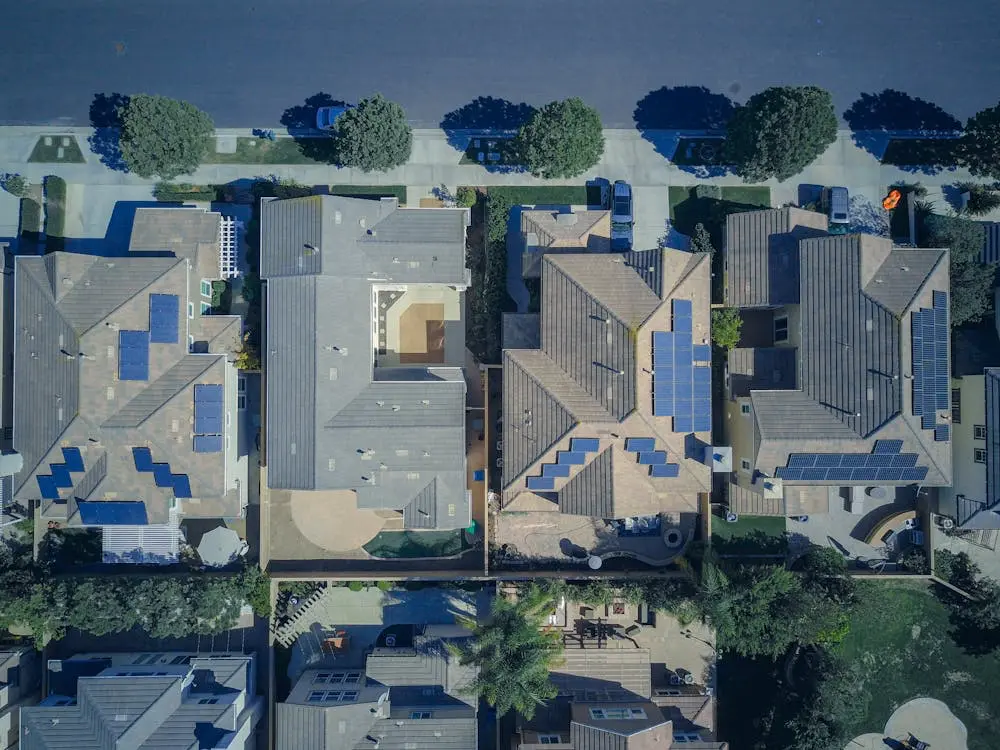/
Energieeffizienzklassen Haus: Standards von A+ bis H


Energieeffizienz lohnt sich – für Eigentümer, Käufer und Verkäufer gleichermaßen.
Die Energieeffizienzklasse eines Hauses hat direkten Einfluss auf Heizkosten, Umweltbilanz und den Marktwert der Immobilie. In diesem Beitrag erfahren Sie, was hinter den Klassen A+ bis H steckt, wie Sie die Effizienz Ihrer Immobilie verbessern und welche Förderungen Sie dabei unterstützen – egal, ob Sie vermieten, verkaufen oder selbst darin wohnen.
Energieeffizienzklassen beim Haus – So steigern Sie Wert, Nachfrage und Wohnkomfort
Ob Verkauf, Vermietung oder Selbstnutzung – die Energieeffizienzklasse eines Hauses entscheidet heute mehr denn je über laufende Kosten, Marktwert und Attraktivität. Wer die Klassen versteht und gezielt verbessert, kann bares Geld sparen und gleichzeitig einen Beitrag zum Klimaschutz leisten.
Was bedeutet die Energieeffizienzklasse?
Die Energieeffizienzklasse ordnet ein Gebäude anhand seines Energieverbrauchs in eine Skala von A+ (sehr effizient) bis H (sehr ineffizient) ein.
Sie wird im Energieausweis ausgewiesen und ist für Käufer und Mieter ein wichtiges Entscheidungskriterium.
Beispiele:
- A+: Sehr niedriger Energiebedarf, modernste Technik und hervorragende Dämmung
- H: Sehr hoher Energieverbrauch, oft unsanierte Altbauten
Warum ist die Effizienzklasse so wichtig?
1. Wertstabilität
Energieeffiziente Immobilien behalten ihren Marktwert besser und erzielen oft höhere Verkaufspreise.
2. Betriebskosten
Ein Haus der Klasse H kann bis zu viermal so hohe Heizkosten verursachen wie eines der Klasse A+.
3. Nachfrage
Käufer und Mieter achten zunehmend auf Nebenkosten und Klimabilanz – schlechte Effizienz kann zum Ausschlusskriterium werden.
Überblick: Die Klassen A+ bis H
| Klasse | Energiebedarf (kWh/m²/Jahr) | Typische Gebäudebeispiele |
|---|---|---|
| A+ | < 30 | Passivhaus, KfW-40 Neubauten |
| A | 30–50 | Effizienzhaus 55, moderne Neubauten |
| B | 50–75 | Effizienzhaus 60, gut gedämmte Häuser |
| C | 75–100 | Niedrigenergiehaus |
| D | 100–130 | Hochwertiger Bestand mit Dämmung |
| E | 130–160 | Teilweise sanierte Altbauten |
| F | 160–200 | Einfach gedämmte Bestandsgebäude |
| G | 200–250 | Altbau ohne nennenswerte Sanierung |
| H | > 250 | Unsanierte Altbauten, Denkmäler |
Wie Sie die Energieeffizienz verbessern können
Wärmedämmung optimieren
Dach, Fassade und Kellerdecke professionell dämmen.
Fenster und Türen erneuern
Moderne Isolierverglasung reduziert Wärmeverluste erheblich.
Heizsystem modernisieren
Austausch alter Heizungen gegen Wärmepumpe, Brennwerttechnik oder Fernwärme.
Erneuerbare Energien nutzen
Photovoltaik, Solarthermie oder Biomasseanlagen integrieren.
Tipp: Diese Maßnahmen können die Effizienzklasse um mehrere Stufen verbessern – ein Plus für den Immobilienwert.
Fördermöglichkeiten nutzen
Der Staat unterstützt energetische Sanierungen mit Zuschüssen und zinsgünstigen Krediten, etwa über die KfW oder das BAFA.
Ein Energieberater kann helfen, die passenden Förderprogramme zu finden und Anträge korrekt zu stellen.
Energieausweis: Pflicht beim Verkauf und der Vermietung
Wer eine Immobilie verkauft oder neu vermietet, muss den Energieausweis vorlegen.
Er zeigt nicht nur die Effizienzklasse, sondern auch konkrete Verbrauchs- oder Bedarfswerte und Modernisierungsempfehlungen.
Fazit
Die Energieeffizienzklasse ist weit mehr als eine Zahl im Energieausweis – sie beeinflusst direkt Nebenkosten, Wohnkomfort, Marktwert und Nachfrage.
Wer frühzeitig investiert, profitiert langfristig von geringeren Kosten, einem höheren Immobilienwert und einem Wettbewerbsvorteil am Markt.

